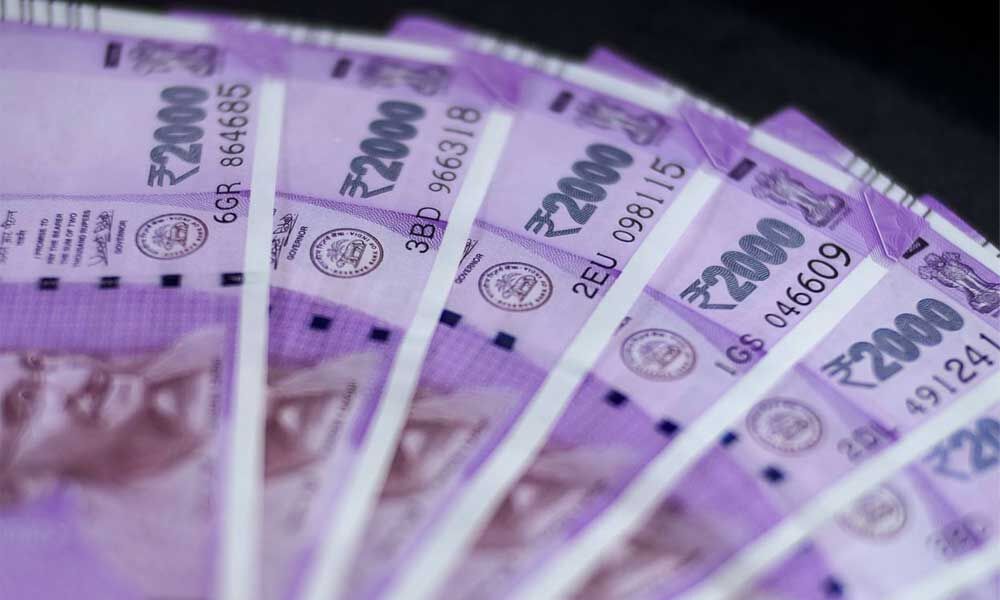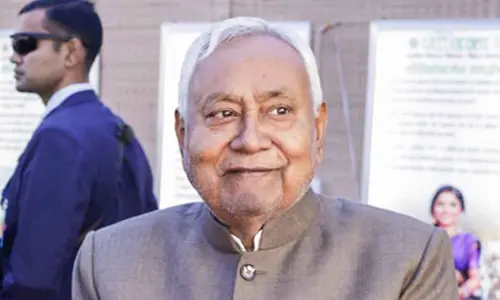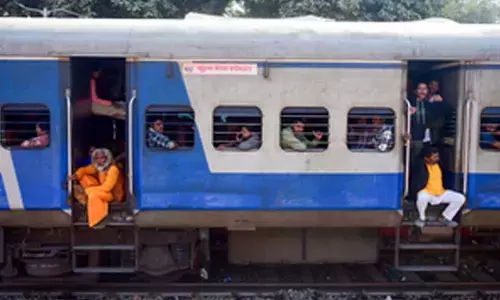A year on Covid plays havoc with employment, incomes, finds APU study

A year on Covid plays havoc with employment, incomes, finds APU study
A new report, ‘State of Working India 2021: One Year of Covid-19’ by the researchers at Azim Premji University documents the impact of one-year of Covid-19 in India, on jobs, incomes, inequality, and poverty.
Bengaluru: A new report, 'State of Working India 2021: One Year of Covid-19' by the researchers at Azim Premji University documents the impact of one-year of Covid-19 in India, on jobs, incomes, inequality, and poverty. It also examines the effectiveness of policy measures that have thus far been undertaken to offer relief and support. Finally, seeing that India is in the midst of an even more deadly second wave, it offers some policy suggestions for the near and medium-term future.
The main findings were presented by Amit Basole, Associate Professor of Economics at the University followed by a conversation with Farzana Afridi (Professor of Economics, Indian Statistical Institute, Delhi), Yamini Aiyar (Director, Centre for Policy Research), Uma Mahadevan (Principal Secretary, Panchayat Raj, Dept of Rural Devt & Panchayat Raj, Govt of Karnataka), Mallige (Karnataka Janashakti), and Jean Drèze (Visiting Professor of Economics, Univ. of Ranchi), moderated by Arjun Jayadev, Professor of Economics at the university, and Rosa Abraham, Senior Research Fellow at the Centre for Sustainable Employment.
Vice-Chancellor of Azim Premji University, Anurag Behar, pointed out that, "The pandemic has revealed a systemic and moral failure that makes the most vulnerable always pay the greatest price for everything. We have to change this from the core. This report is a small effort in this direction. It analyses information from the first year of the pandemic to draw lessons for the near and the not-so-near future."
The report shows that the pandemic has further increased informality and led to a severe decline in earnings for the majority of workers resulting in a sudden increase in poverty. Women and younger workers have been disproportionately affected. Households have coped by reducing food intake, borrowing, and selling assets.
Government relief has helped avoid the most severe forms of distress, but the reach of support measures is incomplete, leaving out some of the most vulnerable workers and households. The lead author of the report, Basole, said that 'Additional government support is urgently needed now for two reasons - compensating for the losses sustained during the first year and anticipating the impact of the second wave. This can include continuing free rations beyond June, additional cash transfers, an expanded MGNREGA, and an urban jobs programme.'
Main findings of the report
1. Employment and incomes bounced back in June 2020, but recovery remained incomplete
a. About 100 million lost jobs during the nationwide April-May 2020 lockdown. Most were back to work by June 2020, but even by the end of 2020, about 15 million workers remained out of work. Incomes also remained depressed. Average monthly household income per capita in Oct 2020 (Rs 4,979) was still below its level in Jan 2020 (Rs 5,989)
b. Job losses were higher for States with a higher average Covid case load. Maharashtra, Kerala, Tamil Nadu, Uttar Pradesh, and Delhi, contributed disproportionately to job losses
c. Mobility restrictions led to income losses due to decreased economic activity. We find that a 10% decline in mobility was associated with a 7.5% decline in income. This number is useful to keep in mind when estimating the impact of future lockdowns.
2. Women and younger workers were disproportionately affected, and many could not return to work even by the end of the year
a. During the lockdown and in the months after, 61% of working men remained employed and 7% lost employment and did not return to work. For women, only 19% remained employed and 47% suffered a permanent job loss during the lockdown, not returning to work even by the end of 2020
b. Younger workers were much more impacted, experiencing higher job losses, of a more permanent nature. 33% of workers in the 15-24 years age group failed to recover employment even by Dec 2020. This number was only 6% in the 25-44 years group.
3. There was a large increase in informal employment
After the lockdown, workers came back into more precarious and informal forms of employment. Nearly half of formal salaried workers moved into informal work, either as self-employed (30%), casual wage (10%) or informal salaried (9%) workers, between late 2019 and late 2020.
4. Poorer households were worst affected, and poverty and inequality has increased.
a. Though incomes fell across the board, the pandemic has taken a far heavier toll on poorer households. In April and May, the poorest 20% of households lost their entire incomes. In contrast the richer households suffered losses of less than a quarter of their pre-pandemic incomes. Over the entire eight-month period (Mar to Oct), an average household in the bottom 10% lost Rs 15,700, or just over two months' income
b. The number of individuals who lie below the national minimum wage threshold (Rs 375 per day as recommended by the Anoop Satpathy committee) increased by 230 million during the pandemic. This amounts to an increase in the income poverty rate by 15 percentage points in rural and nearly 20 percentage points in urban areas.
5. Households coped by decreasing food intake and going into debt
Households coped by cutting back on food intake, selling assets, and borrowing informally from friends, relatives, and moneylenders. An alarming 90 per cent of respondents in the Azim Premji University Covid Livelihoods Phone Survey reported that households had suffered a reduction in food intake as a result of the lockdown. Even more worryingly, 20 per cent reported that food intake had not improved even six months after the lockdown.
6. Government relief measures helped, but exclusions were also common
We report survey evidence on the reach of food and cash elements of last year's support packages. PDS coverage far exceeds the coverage achieved by Jan Dhan so far. Across multiple surveys, around 90% of households had a ration card but the Jan Dhan coverage was much smaller, only around 50% of households had a woman-owned Jan Dhan account. However, the efficacy of PMGKY was similar for both types of relief measures. The India Working Survey (a largely rural random survey in Karnataka and Rajasthan conducted in August-September 2020) showed that, conditional on eligibility (those with priority ration cards or Jan Dhan accounts), 65% of card holders received some PMGKY allocation (i.e. grains in excess of the usual quota) while 35% only received their usual PDS quota (no extra grains). For cash, out of those having women-owned Jan Dhan accounts 60% received one or more transfers, around 30% did not receive any transfers (and 10% did not know).
7. Bold measures will be required to emerge stronger from the crisis
a. So far, India's fiscal response to Covid-19 has been conservative. The impacts of the second wave are still unfolding and may be as large, or larger than those we report for the first wave. Further, coming as it does on the back of depleted savings, debt, and reduced fallback options, the second wave can lead to potentially larger impacts on work, incomes, food security, health and education. The states, who are at the forefront of the pandemic response in terms of containment as well as welfare, are severely strained in their finances. There are thus compelling reasons for the Union government to undertake additional spending now
b. We (Researchers) propose the following urgent policy measures -
• Extending free rations under the PDS beyond June, at least till the end of 2021.
• Cash transfer of Rs 5,000 for three months to as many vulnerable households as can be reached with the existing digital infrastructure, including but not limited to Jan Dhan accounts.
• Expansion of MGNREGA entitlement to 150 days and revising programme wages upwards to state minimum wages. Expanding the programme budget to at least Rs 1.75 lakh crores.
• Launching a pilot urban employment programme in the worst hit districts, possibly focused on women workers.
• Increasing the central contribution in old-age pensions to at least Rs 500.
• Automatically enrolling all MGNREGA workers who do construction work as registered workers under the Building and Other Construction Workers (BoCW) Act so that they can access social security benefits.
• A Covid hardship allowance to 2.5 million Anganwadi and ASHA workers of Rs 30,000 (5,000 per month for six months).
These measures, taken together, will amount to approximately Rs 5.5 lakh crores of additional spending and bring the total fiscal outlay on Covid relief to around 4.5% of GDP over two years. We believe that this large fiscal stimulus is justified given the magnitude of the crisis. For example, the cash transfer is just equal to incomes lost last year by the poorest 10% of households, leaving alone the second wave impact.
c. Failure to take action now will cause short-term hardship to continue and may compound the long-term effects leading to years of lost welfare gains. Increased poverty as well as loss of savings and productive resources can lead to poverty traps. Nutritional and educational deficits, occurring due to stressed household finances, can have long-term effects. Women leaving the labour market can lead to long term increases in already large gender gaps. Youth may also experience long-term impacts on earnings and productivity due to these lost years.


















